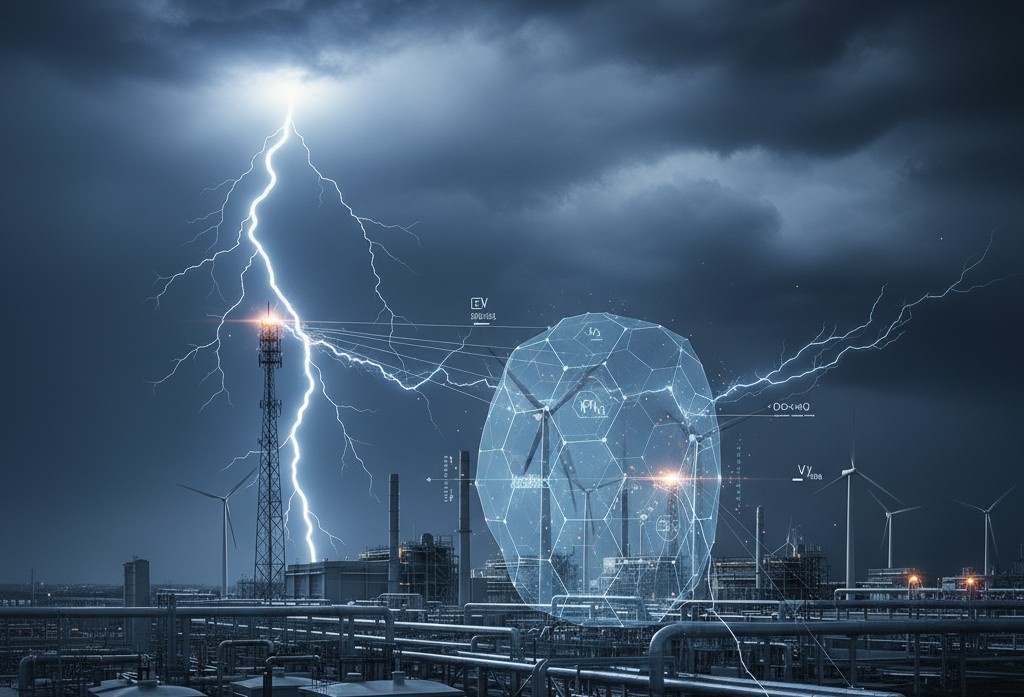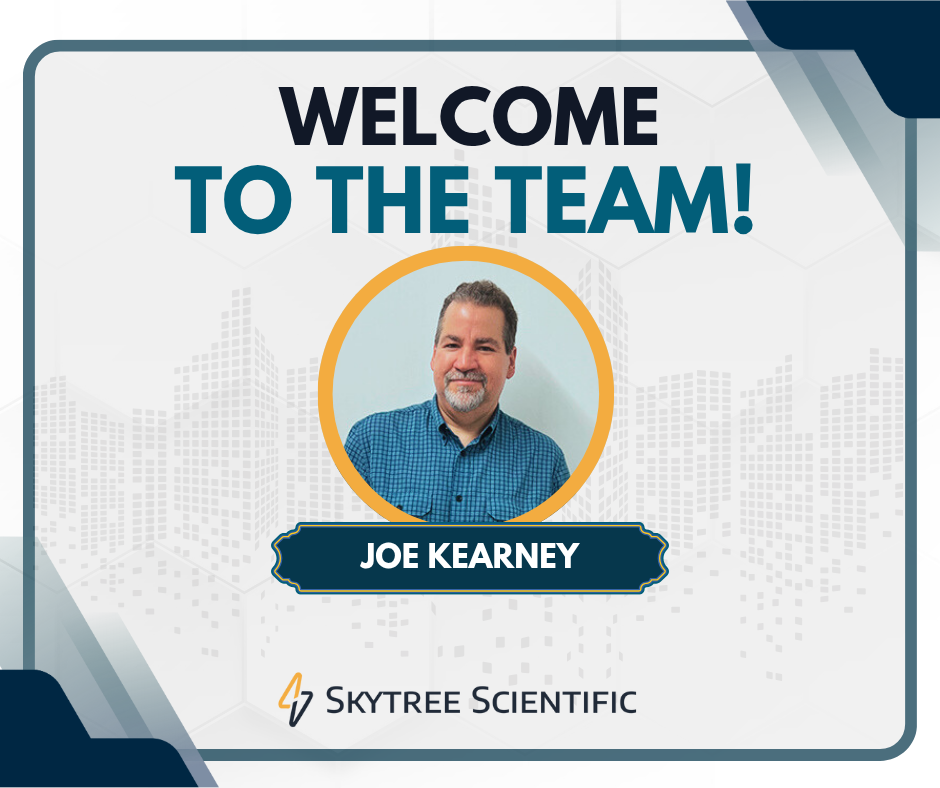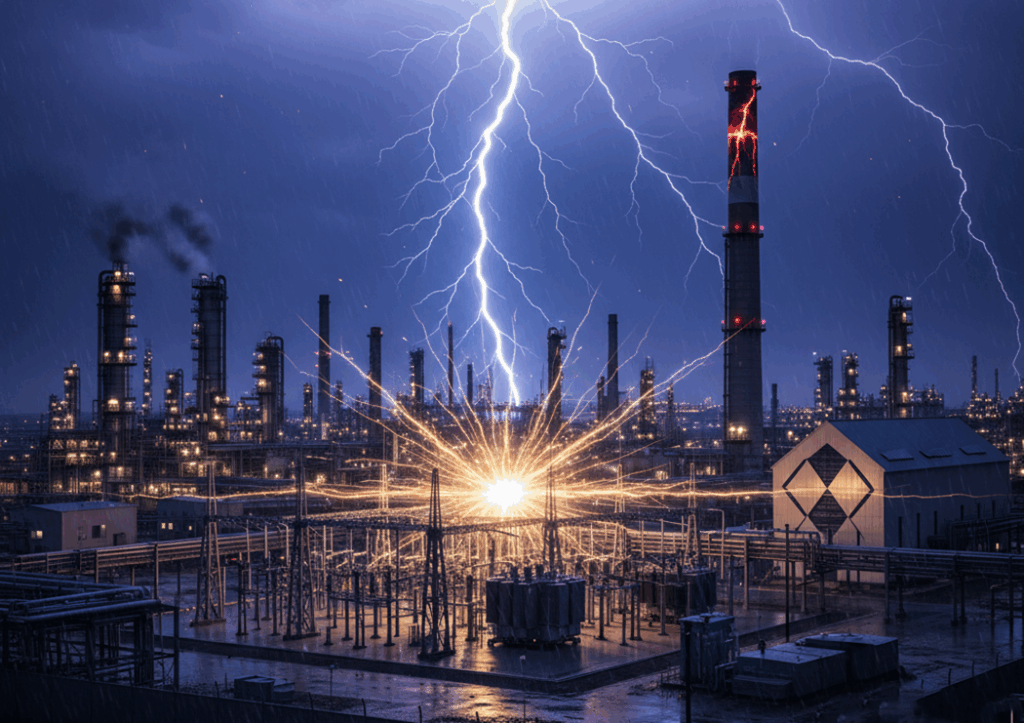When it comes to protecting critical infrastructure from lightning’s destructive force, the answer isn’t as simple as consulting a map. While historical strike data forms an essential foundation, truly effective protection demands a sophisticated blend of comprehensive engineering analysis and cutting-edge AI technology—all tailored to your site’s unique characteristics.
The Foundation: Why Historical Data Still Matters
Historical lightning strike data—typically presented as strike density maps—remains a cornerstone of modern risk assessment, and for good reason.
These maps establish the baseline strike frequency for any given region, offering crucial insight into how often lightning activity occurs in your area. This foundational metric serves as a starting point for all subsequent analysis. Major safety standards including NFPA 780, IEC 62305, and UL 96A explicitly require this historical strike density data as a fundamental input in their risk calculation methodologies.
Beyond the Map: The Critical Role of Site-Specific Analysis
Here’s where many approaches fall short: relying solely on historical maps bypasses the bulk of the engineering analysis needed for genuinely effective protection. A thorough assessment must account for the unique characteristics that define your structure’s vulnerability:
Structural factors play a decisive role. Building height and architectural complexity directly influence strike probability—taller structures with intricate geometries naturally intercept more lightning. The materials used in construction matter immensely too; a steel-framed building conducts current very differently than a wooden structure.
Environmental context is equally critical. Nearby tall objects and trees can either shield your facility or make it a preferential target. Below ground, soil resistivity determines how effectively the earth can dissipate lightning’s enormous electrical charge—a factor that can make or break your entire protection system’s performance.
Engineering Standards: A Holistic Framework
Modern design standards take a comprehensive view of lightning protection, treating it as an exercise in probability management and consequence mitigation rather than simple strike counting.
These frameworks—NFPA 780, IEC 62305, and others—mandate a detailed evaluation process that weighs multiple factors simultaneously:
- Strike density derived from historical data
- The facility’s operational importance (a hospital versus a warehouse, for instance)
- Occupancy levels and potential for casualties
- Risk to sensitive equipment, essential services, or irreplaceable assets
- Economic justification through rigorous cost-benefit analysis
It’s important to understand what this assessment does—and doesn’t—do. We’re not predicting when lightning will strike. Instead, we’re calculating probabilities and evaluating consequences, enabling informed decisions about protection measures that align with acceptable risk thresholds.
The AI Advantage: Optimization at Scale
Artificial Intelligence represents the next evolution in lightning protection strategy. Where traditional methods struggle with the sheer complexity of multi-variable analysis, AI excels.
Our AI-powered approach analyzes the complete picture—historical patterns, site-specific conditions, soil characteristics, and the intricate requirements of multiple standards—to recommend optimally tailored protection systems.

Rather than relying on simplified lookup tables, AI performs sophisticated analyses to identify the most effective and economical combination of air terminals, down conductors, and grounding networks for your specific situation.
The result? Protection measures precisely calibrated to bring your site to the required safety level, neither over-engineered nor inadequate.
Our Commitment: Objective Expertise
We’ve built our practice on a principle that sets us apart in the lightning protection industry: complete objectivity.
We don’t sell lightning protection materials or engineering services. This deliberate separation eliminates any potential conflict of interest, ensuring our recommendations serve one purpose only—achieving the appropriate level of safety and regulatory compliance for your facility.
Your protection needs and adherence to recognized standards guide our advice, not sales targets or product inventories. When you work with us, you’re getting unbiased expertise focused entirely on effective risk management.





